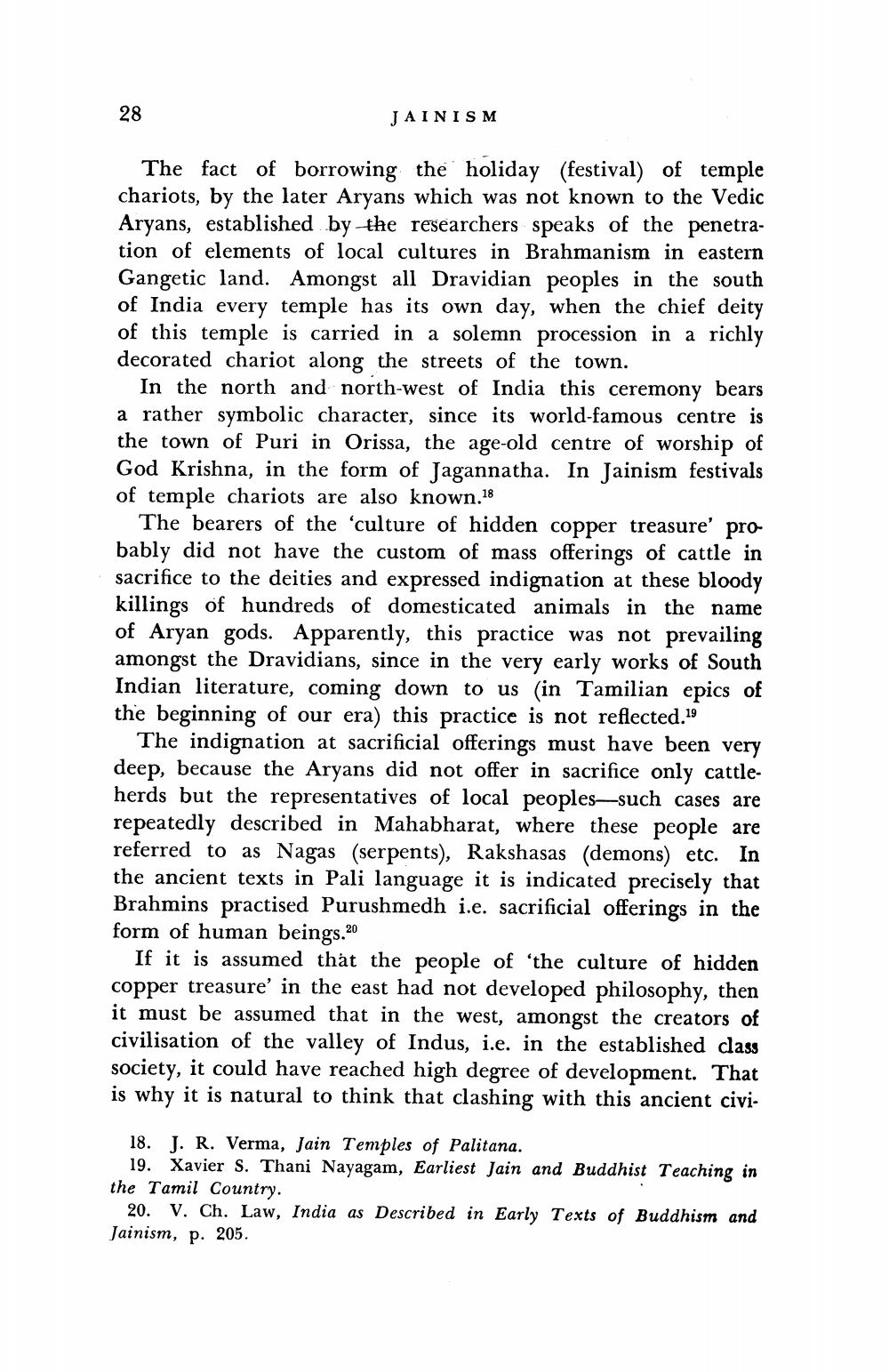________________
28
JAINISM
The fact of borrowing the holiday (festival) of temple chariots, by the later Aryans which was not known to the Vedic Aryans, established by the researchers speaks of the penetration of elements of local cultures in Brahmanism in eastern Gangetic land. Amongst all Dravidian peoples in the south of India every temple has its own day, when the chief deity of this temple is carried in a solemn procession in a richly decorated chariot along the streets of the town.
In the north and north-west of India this ceremony bears a rather symbolic character, since its world-famous centre is the town of Puri in Orissa, the age-old centre of worship of God Krishna, in the form of Jagannatha. In Jainism festivals of temple chariots are also known.18
The bearers of the 'culture of hidden copper treasure' probably did not have the custom of mass offerings of cattle in sacrifice to the deities and expressed indignation at these bloody killings of hundreds of domesticated animals in the name of Aryan gods. Apparently, this practice was not prevailing amongst the Dravidians, since in the very early works of South Indian literature, coming down to us (in Tamilian epics of the beginning of our era) this practice is not reflected.19
The indignation at sacrificial offerings must have been very deep, because the Aryans did not offer in sacrifice only cattleherds but the representatives of local peoples-such cases are repeatedly described in Mahabharat, where these people are referred to as Nagas (serpents), Rakshasas (demons) etc. In the ancient texts in Pali language it is indicated precisely that Brahmins practised Purushmedh i.e. sacrificial offerings in the form of human beings.20
If it is assumed that the people of 'the culture of hidden copper treasure' in the east had not developed philosophy, then it must be assumed that in the west, amongst the creators of civilisation of the valley of Indus, i.e. in the established class society, it could have reached high degree of development. That is why it is natural to think that clashing with this ancient civi
18. J. R. Verma, Jain Temples of Palitana.
19. Xavier S. Thani Nayagam, Earliest Jain and Buddhist Teaching in the Tamil Country.
20. V. Ch. Law, India as Described in Early Texts of Buddhism and Jainism, p. 205.




